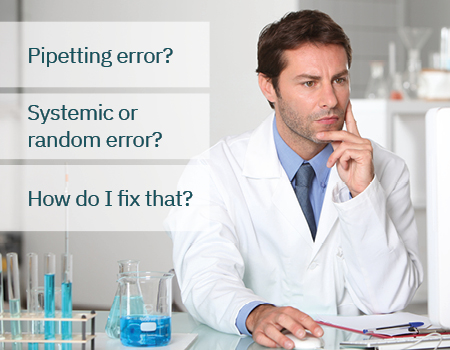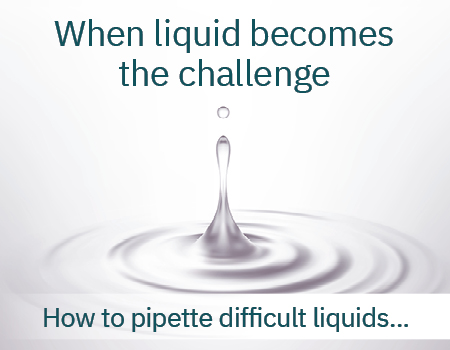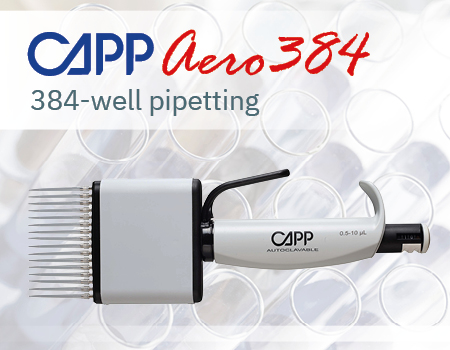Improve your pipetting technique
Good pipetting technique helps scientists achieve more reliable results from their experiments. Nothing is more frustrating than having to repeat an experiment because poor pipetting technique offset the accuracy of aspirated volumes by 10-50%. Good pipetting technique may also help avoid embarrassing retractions of manuscripts from journals after peers fail to replicate an experiment. Proper pipette technique not only improves experimental outcomes, but it also helps protect the scientist from injury resulting from poor micropipette technique. As proper pipetting technique encompasses the use of ergonomic pipettes, this can also translate to a long-lasting investment for your laboratory. By choosing CAPP’s range of ergonomic pipettes labs have the benefit of long-lasting and robust tools that can be used for a very long time. When coupled with the use of CAPP’s premium filter tips and pipette cone filters that protect pipette shafts from potentially harmful splashes, good pipette technique will save on the cost of equipment replacement.
How to pipette - the essential guide
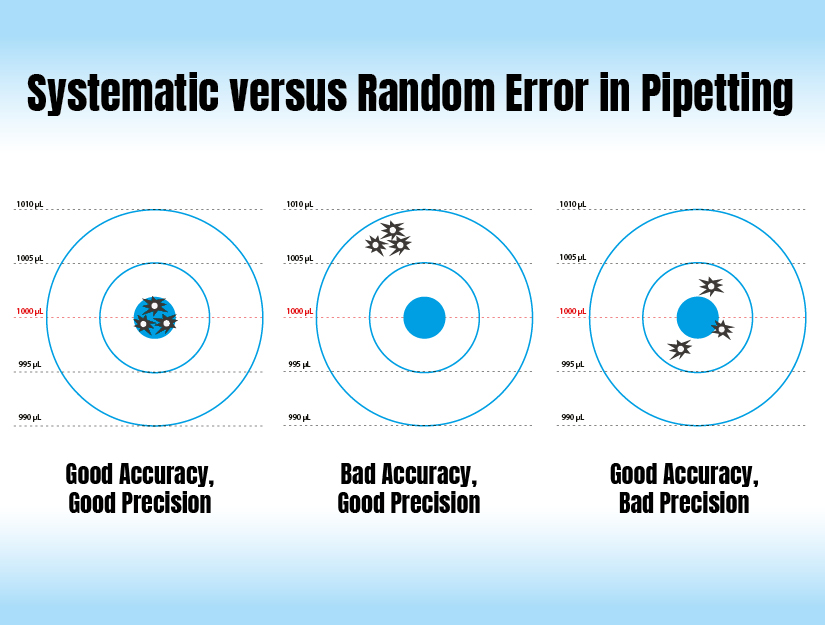
The art of using a pipette correctly can be taught in a few life-changing steps. Life-changing because once you have learned how to use proper pipette technique, the skill can be leveraged to produce scientifically accurate and precise volumetric measurements. First, choose a comfortable and ergonomic pipette such as the CAPPSolo single channel pipette. An ergonomic pipette will make the user comfortable and accelerate learning. Second, practice setting the volume correctly with the intuitive counter-mechanism. Hold the pipette at eye level to avoid parallax error. Third, load an ExpellPlus filtered pipette tip and gently press the plunger to the first stop. Lower the pipette tip into the liquid to be transferred (2-5 mm depth) and hold it there for 2-3 seconds. Smoothly release the plunger to aspirate the liquid and wait a few seconds for the tip to fully load the liquid. Carefully lift the pipette in a vertical position and dispense the liquid into the desired container by smoothly pressing the plunger to the second stop. Lift the pipette with a wiping action against the interior of the container to release any remaining fluid. With that, you now have the basics of how to pipette and you can progress on your journey of learning proper pipette technique with confidence.
The impact of pipetting technique
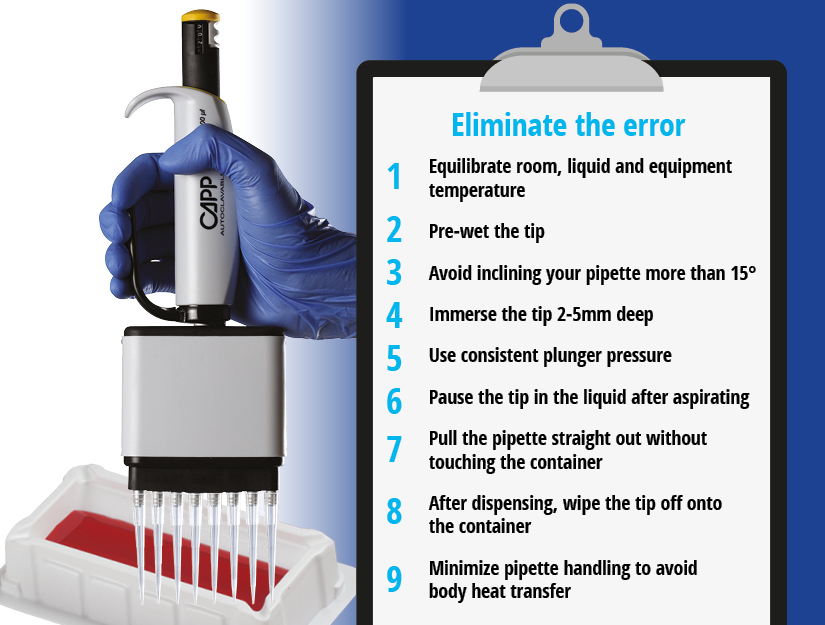 The impact of proper pipetting technique is hard to estimate for the untrained user. For seasoned micropipette users, proper pipette technique is invaluable. Good pipetting technique yields accurate and precise liquid transfers with minimum risk of error. Accuracy and precision are vital aspects of pipetting, and they are best preserved by investing in proper pipette technique. As such, proper pipette technique may be the difference between a life-saving diagnosis and an erroneous misdiagnosis for patients that are ill. Good micropipette technique will often contribute towards the execution of replicable experiments that are the bedrock of life sciences. With good micropipette technique scientists can gain the confidence and respect of their peers, while avoiding the embarrassing outcomes of well-designed experiments failed by poor pipette technique. While the low accuracy resulting from poor pipette technique may not always result in severe consequences for scientists, developing the skill of good pipetting technique will have a huge impact on the outcomes of their experimental assays.
The impact of proper pipetting technique is hard to estimate for the untrained user. For seasoned micropipette users, proper pipette technique is invaluable. Good pipetting technique yields accurate and precise liquid transfers with minimum risk of error. Accuracy and precision are vital aspects of pipetting, and they are best preserved by investing in proper pipette technique. As such, proper pipette technique may be the difference between a life-saving diagnosis and an erroneous misdiagnosis for patients that are ill. Good micropipette technique will often contribute towards the execution of replicable experiments that are the bedrock of life sciences. With good micropipette technique scientists can gain the confidence and respect of their peers, while avoiding the embarrassing outcomes of well-designed experiments failed by poor pipette technique. While the low accuracy resulting from poor pipette technique may not always result in severe consequences for scientists, developing the skill of good pipetting technique will have a huge impact on the outcomes of their experimental assays.
Pipetting technique is a term that is used to refer to the full scope of a user's interactions with a pipette as they conduct their experiments. As would be expected, some practices are termed proper pipetting technique and help the user maintain a high level of accuracy and precision in their volume transfers. Bad pipetting technique, on the contrary, may introduce error and produce inaccurate volume transfers that would be difficult to replicate. Proper pipette technique depends on a range of factors with the most significant being the user and their instruments of choice. The user-dependent aspects of proper pipette technique are a learned skill. We wrote this blog post to provide some helpful tips for users to improve their micropipette technique. With diligent study and careful practice, it will become easy for most scientists and lab technicians to produce reliable results from their volume transfers. As for the equipment-dependent aspects of proper pipetting technique, choosing high-quality pipettes and pipette tips will significantly improve pipetting technique.
Developing good pipetting technique is critical for producing dependable results and it is achievable with the right guidance. For new scientists, we recommend starting with our guide on common pipette handling errors to develop an awareness of potential pitfalls when using micropipettes. By developing a clear understanding of pipetting error, it becomes easier to recognize where you need to improve your micropipette technique. Second, we recommend practicing your pipette technique by aspirating a fixed volume of distilled water ten times, onto a weighing boat on a calibrated balance. Take note of the average of the ten values and determine your systematic error. As you pipette each week, check to see if your systematic error is reducing. Third, select a premium micropipette such as the CAPP Ecopipette that is designed to help you improve your micropipette technique. This ergonomic pipette feels comfortable in the hand and reduces strain - a major contributor to poor pipette technique.
When you use poor pipetting technique the risk of introducing error increases. Poor pipette technique may result in systematic error which is manifested as inaccurate volume transfers. Inaccurate volumes may alter the concentration of reaction mixes leading to failed experiments. Wrong micropipette technique may also increase the risk of imprecise pipette performance (random error). When such errors are introduced, the reliability of the experiment is lowered, and downstream processes may be negatively affected. Check out our helpful guide on pipette error to learn more. In addition to the risk of poor-quality results, wrong micropipette technique may also damage the shaft of the micropipette. This can usually be prevented by using reliable filter tips. Filter tips are a great option for training new personnel good pipetting technique. Lastly, wrong pipette technique may put the user at the risk of injury. This risk increases exponentially when one pipettes large sample numbers several times a week. To mitigate this risk, you may use a comfortable pipette that is designed to provide advanced protection against repetitive strain injury.
Testing the accuracy of your pipetting technique can be done by using the method for testing for systematic error. This is a straightforward process involving a pipette, a calibrated balance, and some distilled water. Using a micropipette, aspirate the maximum volume of water that the pipette can hold and dispense the water onto a balance with a weighing boat (remember to tare the balance). Record the measurements obtained in µg and repeat the process nine more times. With the recorded values, express the standard deviation as a percentage of the average (mean) to determine your systematic error. Systematic error gives you an indication of the accuracy of your pipetting technique and the process can be repeated at a different volume setting and at different intervals (weekly or monthly), helping you to determine any improvement in your pipetting technique. One thing worth highlighting is that other calculations of pipetting error may incorporate the Z factor to convert the weight of water (µg to µL) to the right units for assessing one's pipetting technique. This simple process gives a dependable indication of the accuracy of one's pipetting technique.
Pipetting technique: operators are a source of error
 No discussion of pipetting technique would be complete without highlighting the role of the user as a potential source of error. Although there are innovative and advanced pipettes like the CAPPMaestro electronic pipette designed to reduce the incidence of pipetting error, operators do not always leverage advances in technology to improve experimental outcomes. This can be attributed to insufficient training, complacency, and a failure to maintain equipment in calibration among other reasons. Insufficient training often affects new members of a laboratory, especially when there is an assumption of prior training in proper pipette technique. The expectation that the new member already knows good pipetting technique often leaves them to unintentionally develop bad micropipette technique. Some other operators become complacent and fail to observe known guidelines for proper pipette technique. Most of these scenarios can be resolved by helpful articles like the one you are reading as well as routine training in good pipetting technique.
No discussion of pipetting technique would be complete without highlighting the role of the user as a potential source of error. Although there are innovative and advanced pipettes like the CAPPMaestro electronic pipette designed to reduce the incidence of pipetting error, operators do not always leverage advances in technology to improve experimental outcomes. This can be attributed to insufficient training, complacency, and a failure to maintain equipment in calibration among other reasons. Insufficient training often affects new members of a laboratory, especially when there is an assumption of prior training in proper pipette technique. The expectation that the new member already knows good pipetting technique often leaves them to unintentionally develop bad micropipette technique. Some other operators become complacent and fail to observe known guidelines for proper pipette technique. Most of these scenarios can be resolved by helpful articles like the one you are reading as well as routine training in good pipetting technique.
Ten step-by-step recommendations to improve pipetting technique
Here are ten quick steps that can help users develop proper pipetting technique fast. These recommendations are a combination of best practices derived from our decades of experience supplying high-quality pipettes to labs around the world, as well as some top recommendations from the ISO 8655-1:2002(en) standard. By using these suggestions, users will not only develop good pipetting technique, but they will also reduce the risk of inaccurate volume transfers that produce unreliable results. Print out this list and post it somewhere close to your pipetting station as a quick reference guide to inspire you and your lab mates to work on improving your micropipette technique.
- Regulate the lab environment as much as possible to minimize temperature fluctuations that may affect the accuracy of your pipetting (≅2%). Whenever possible, equilibrate your liquids for transfer to room temperature before aspirating them.
- Equilibrate the air inside the tip to the liquid by pre-wetting the tip (aspirate 3 times and dispense to waste). This improves the accuracy of your aspiration and provides better uniformity for replicate transfers of a reagent or sample.
- Hold your pipette in a vertical position, never inclining it more than 15°. This will prevent pipetted liquids from entering the shaft of the pipette and corroding it. A damaged shaft may render a pipette inaccurate and unusable.
- Keep the tip immersion depth between 2-5 mm and maintain a vertical position during sample aspiration. Immersing the tip too deep or too shallow in the liquid may lower accuracy by up to 1%.
- Apply smooth, consistent pressure on the pipette plunger and avoid fast or jerky movements. A failure to regulate plunger speed may result in 0.5% reduction in pipetting accuracy.
- Pause for 1-3 seconds after aspirating, keeping the tip inside the liquid. This will allow the liquid sufficient time to move into the pipette tip. Doing this regularly will lower the incidence of systematic error as well.
- Carefully pull the pipette tip straight out of the container without touching the walls. This will make sure no sample or reagent volume is lost before dispensing into the final container.
- After dispensing, remember to wipe the tip into the internal wall of the container you dispensed into. This dispenses any volume that might have been left in the tip. Failing to do this can reduce accuracy by approximately 3%.
- Minimize pipette handling to avoid transferring body heat to the pipette. As mentioned in steps one and two, greater accuracy is achieved in a constant environment.
- Make a habit of inspecting pipette tips before loading or aspirating fluids. Never use damaged tips, bent tips or contaminated tips as these present a huge risk of error. Faulty tips may result lower accuracy by up to 10%.
If you make a habit of following these guidelines, your pipetting technique will improve, and you will produce less error. As there is always more that you can do to improve your micropipette technique, we decided to throw in a few bonus suggestions below to guide you along your journey to proper pipetting technique.
- If you are using an adjustable mechanical pipette, always set the volume in a clockwise direction. If you are adjusting the volume downward, you may go past the desired value by half a turn before moving back in a clockwise direction.
- Always use ergonomic pipettes to minimize user discomfort. Working with a comfortable pipette and observing appropriate posture will help you develop proper pipetting technique and minimize the risk of injury.
- Always use premium quality low-retention pipette tips that fit perfectly on the nose cone of your pipette. Improperly loaded tips have a poor fit that can lower the accuracy of pipetted volumes by up to 50%.

